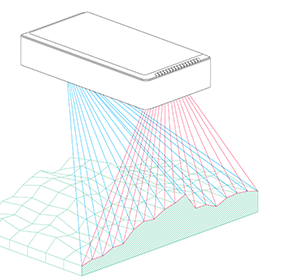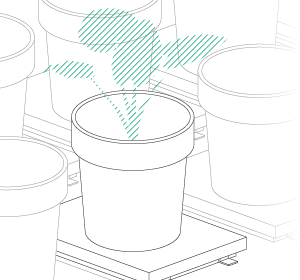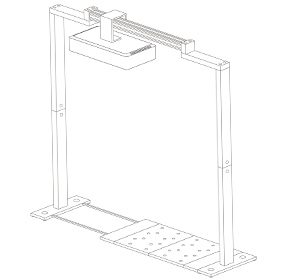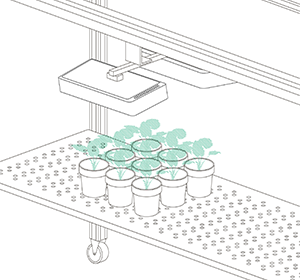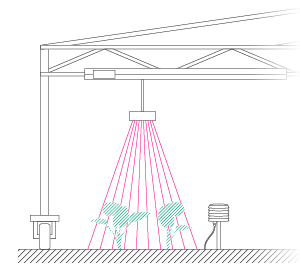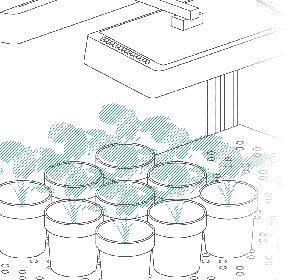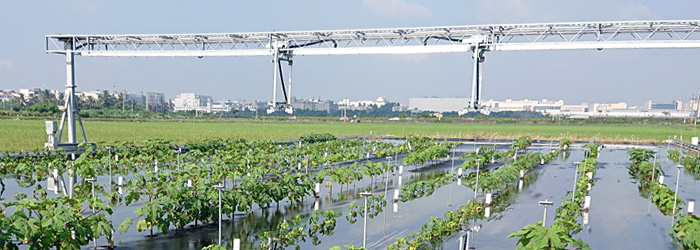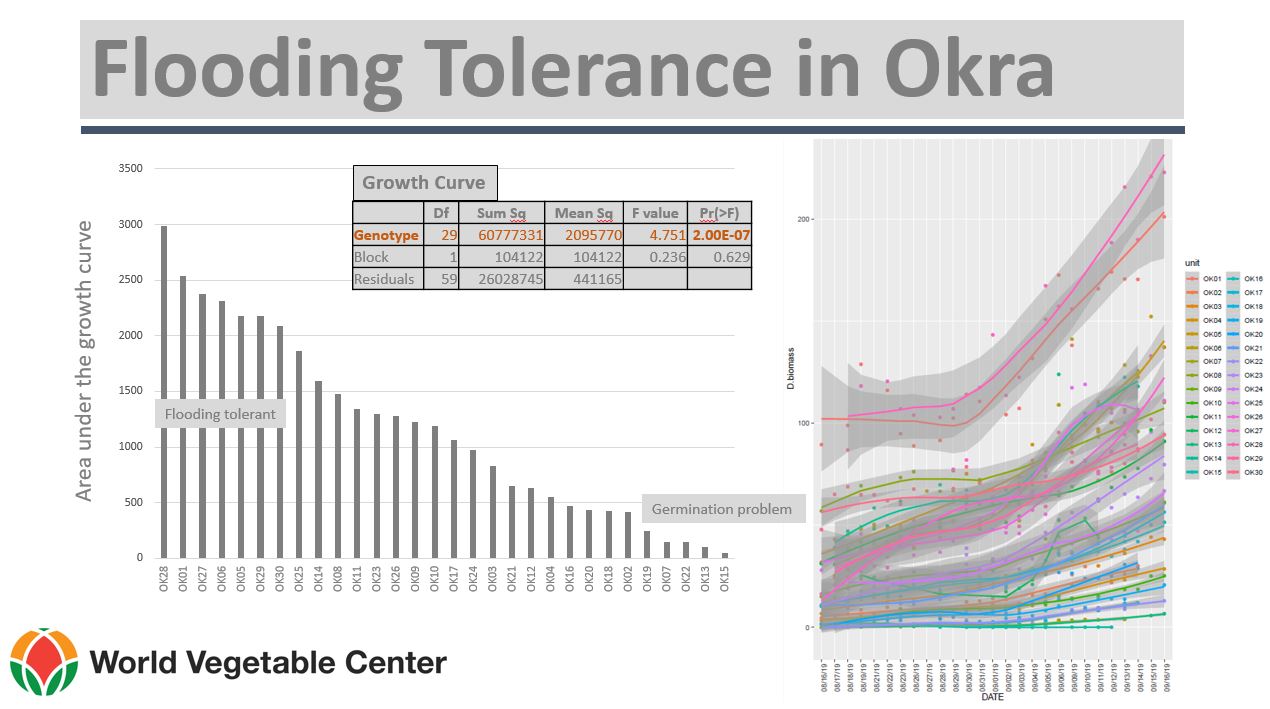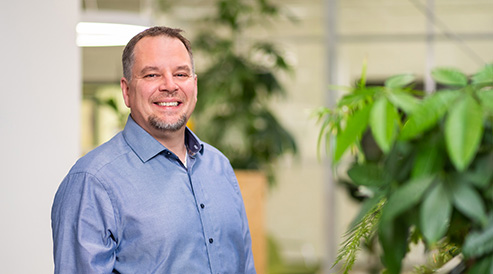Field Phenotyping for Vegetable Growth under high Heat and Flood Stress
In 2019 the World Vegetable Center in Tainan tested the growth of vegetables under high heat and flooding stress. This experiment can only be accomplished during the hot and wet summer also known as “Typhoon Season”.
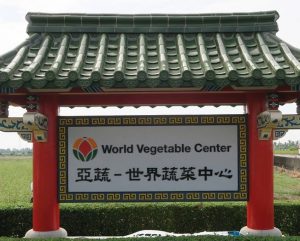
Evaluating the plant health during this experiment without being stuck in the mud was impossible, let alone measuring plant biomass non-destructively. But in the summer of 2019 they succeeded with our field phenotyping solution FieldScan. We asked Dr. Roland Schafleitner to write a blog to share the story behind this challenging experiment.
Dr Roland Schafleitner
World Vegetable Center, Tainan, Taiwan
Typhoon Season
Vegetable cultivation is very difficult during the summer in South-East Asia due to the hot temperatures and strong rains. In addition, summer is also Typhoon Season. Typhoon translates to “Supreme Winds” and is comparable to a hurricane or cyclone.
Taiwan on average receives four to five typhoons a year, mostly between June and October. Now more than ever it is clear that we need to investigate crops that tolerate high heat and wet weather even to the point of flooding. Year-round availability of fresh locally grown vegetables is a top priority for consumers in Taiwan and vegetable varieties that can grow in the hot and humid off season have great potential to increase farmer incomes.
Growth of vegetables under high heat and flooding stress
We where asked to test the growth of vegetables under high heat and flooding stress, research which could only be accomplished during the hot and wet summer also known as “Typhoon Season”. Being able to evaluate the plant health during this experiment without being stuck in the mud is impossible, let alone measuring plant biomass non-destructively. But in the summer of 2019, we succeeded with the help of Phenospex.
When we installed a FieldScan system in 2019, we had not planned on using it during the hot and wet summer of Southern Taiwan. Phenospex promised that the field phenotyping system is water-proof, and in case a Typhoon would approach, the PlantEye sensors could be rapidly demounted and stored in a safe place and easily be put back on the gantry again once the storm is over. We decided to plant a small pilot trial with amaranth and okra in summer 2019. A larger trial could follow in 2020, if the pilot trial went well.
 We prepared the plot in the same way rice farmers prepare their paddies. After leveling the field, we raised small dams around it to keep the water in. The field was almost ready for planting when heavy rain set in for days, transforming the field into a deep swamp, making transplanting the seedlings impossible.
We prepared the plot in the same way rice farmers prepare their paddies. After leveling the field, we raised small dams around it to keep the water in. The field was almost ready for planting when heavy rain set in for days, transforming the field into a deep swamp, making transplanting the seedlings impossible.
Once the weather cleared up, the field staff covered the whole field with a thick black plastic mulch to enable transplanting the seedlings without sinking in up to the knees. The black material absorbed the sunlight and heated up the soil and in spite of that the transplanted seedlings developed well.
Twice during the trial, we had a typhoon alert and had to demount the PlantEye sensors, but luckily none of the storms directly hit us. Three weeks after planting we flooded the field and kept the water level 3 to 5 cm above the plastic mulch. Next flooding trial we will have oxygen sensors in place to measure water logging in different soil depths, but we did not have these for this initial trial.
Results collected with the FieldScan
A few days after flooding, all amaranth accessions declined and started to die. The germplasm uniformly lacked tolerance to water logging. In contrast, a few of the okra accessions just briefly stalled growing after flooding, but quickly re-initiated grow, even while the field was still flooded. Analysis of the growth curves and looking into the growth increment data per day exactly showed the time course and amplitude of the plant growth responses of the plants to flooding.
For example, consider the data from the Okra in this experiment. The graph, on the left side of the image above, shows the different genotypes of Okra. The genotypes that show a very small area under the growth curve grew very little and died under the flooding and high heat conditions. The genotypes on the left side of the graph show a larger area under the growth curve. This shows that these genotypes are more tolerant to the flooding conditions and high heat during typhoon season.
The graph on the right of the image also shows this correlation but this time it is looking at digital biomass over time. The colored lines are different genotypes, lines on this graph that have a small or little digital biomass did not respond well with the conditions in the field and more than likely died. Genotypes that showed an increase and even a very high increase in their digital biomass responded well and very well to these field conditions.
Evaluation of the experiment and the FieldScan
The Phenospex FieldScan was exactly what we needed:
- There was no single genotype that combined vigorous early growth, low growth inhibition under stress and early recovery.
- There were accessions that contained one or two of these traits.
- If phenotyping would have relied on measuring biomass accumulation differences at the end of the trial, we would have missed the information on the component traits for flooding tolerance.
Only by analyzing the response over time, through non-destructive measurements, were we able to identify materials with the desired component traits suitable for breeding. Without the PlantEye sensors on the FieldScan we would not have been able to accomplish this critical experiment with such success. We look forward to expanding on this experiment for the 2020 typhoon season and using the FieldScan again in this manner.

